Thanks to drought and extreme heat much of this year, we lost another pecan tree in our front yard. The mature nut-bearing tree provided shade in our brutal summers, food and shelter for frisky squirrels, birds and other wildlife, and luscious nuts for my famous pecan tart.
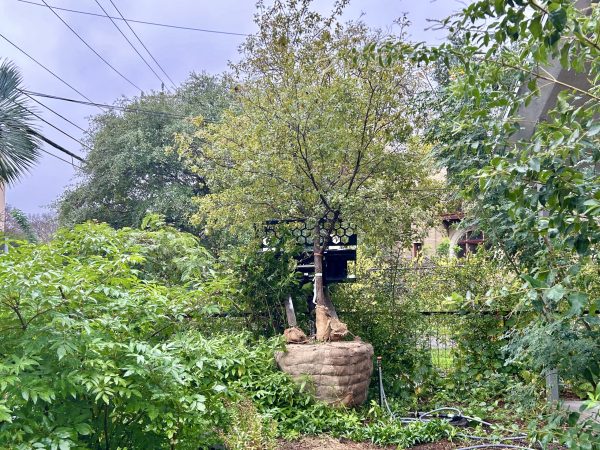
Lacey oak awaits transplanting in downtown San Antonio. –Photo by Monika Maeckle
Our experience was not unusual, as Texas lost a large number of trees this year.
The tree fell victim to a spore driven fungus, Ganoderma rot, that is apparently ubiquitous in the environment. It’s a natural part of the ecosystem, explained Scott Anderson, CEO of Urban Tree Company in San Antonio.
However, when a tree’s health is compromised–from freeze, drought and/or extreme ongoing heat as we’ve witnessed in recent years–the parasitic fungus gets aggressive and rots the tree from the inside out.
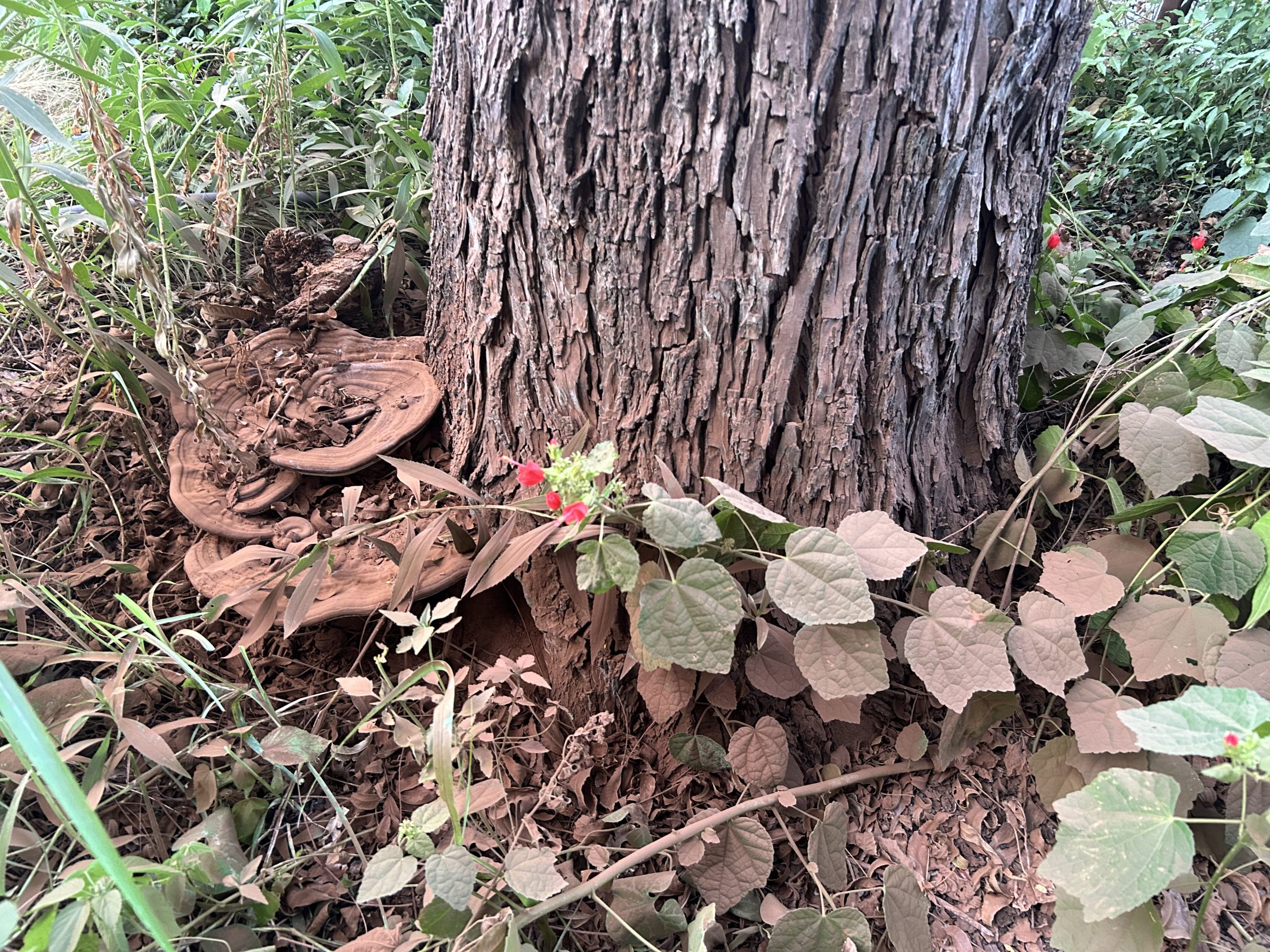
Ganoderma rot and its traveling spores on our recently fallen pecan tree. –Photo by Monika Maeckle
Ganoderma spreads via spores produced in the mushroom like bodies that live on the outside of the tree, known as conks. The conks release spores that are then dispersed by wind and water, infecting wounds on the roots and lower trunks of compromised trees. As the spores spread, the infection progresses to attack the inside of the tree. The resulting decayed wood leads to a dangerously soft, spongy core inside the tree, which typically functions as its anchor.
For us, this became a potential hazard given the tree’s downtown location near an intersection of utility lines, a public alley used as a driveway by many neighbors, and our home. We called our arborist friends at Yetter Tree Care and had the specimen removed in September.
This week, we did our part to help replenish the shrinking urban tree canopy by working with Urban Tree company to plant a 100-gallon Lacey oak at our downtown home not far from the San Antonio River.
Lacey oaks are known for their blue-ish leaves, semi-evergreen habit, moderate growth and excellent wildlife value. They reach about 35 feet in height.
A team of workers led by Cody Segner arrived with a bobcat for toting the 500-pound plus specimen down our historic downtown street. Segner lifted the oak over our four-foot-high fence, placing it within a few yards of its chosen planting spot in the middle of our front yard for installation the following day.
Planting such a large tree in a confined space with fences, existing landscaping, brick walks and utility lines is a challenge and requires heavy lifting by humans and machines alike. The Urban Tree Company crew arrived with machines, tools and muscles ready for the task. Digging the hole, moving the tree, replacing the soil and watering took the four-man team about three hours.
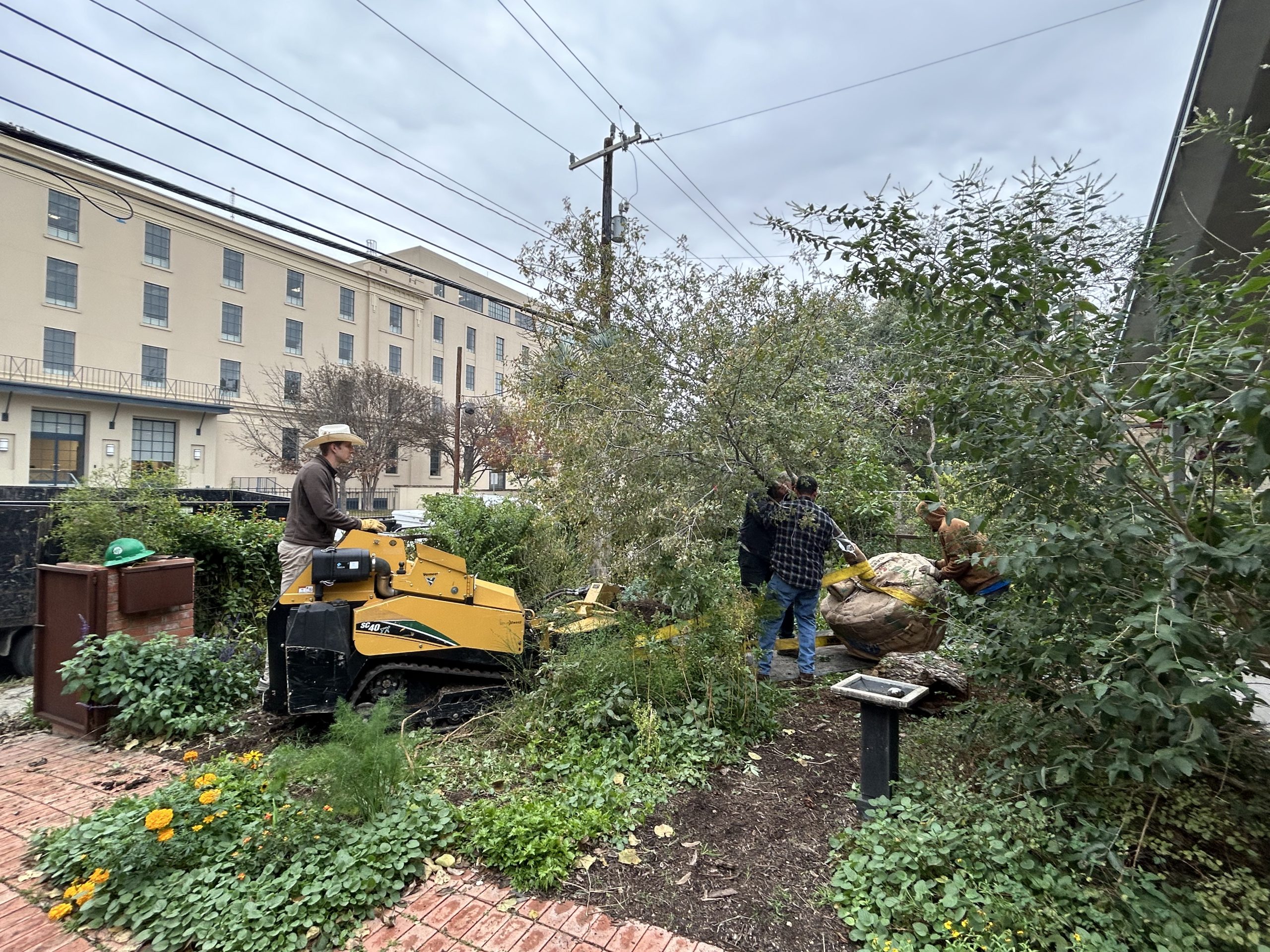
The Urban Tree Company team wrestles our Lacey oak into its future home. –Photo by Monika Maeckle
Urban Tree Company’s Anderson said that in San Antonio, favorable planting conditions for trees will continue until the first week or two of January, then restart again in March. Severe cold and freezes are disadvantageous for new growth and adjustment, so it’s best to get the trees in the ground in the window between severe summer and possible freezes in February and March.
That said, he said things are changing.
“To be honest, I think all of us are kind of scratching our heads about what to think about what the weather is doing, and the seasons and the zones,” Anderson reflected, referring to the weirding of our weather.
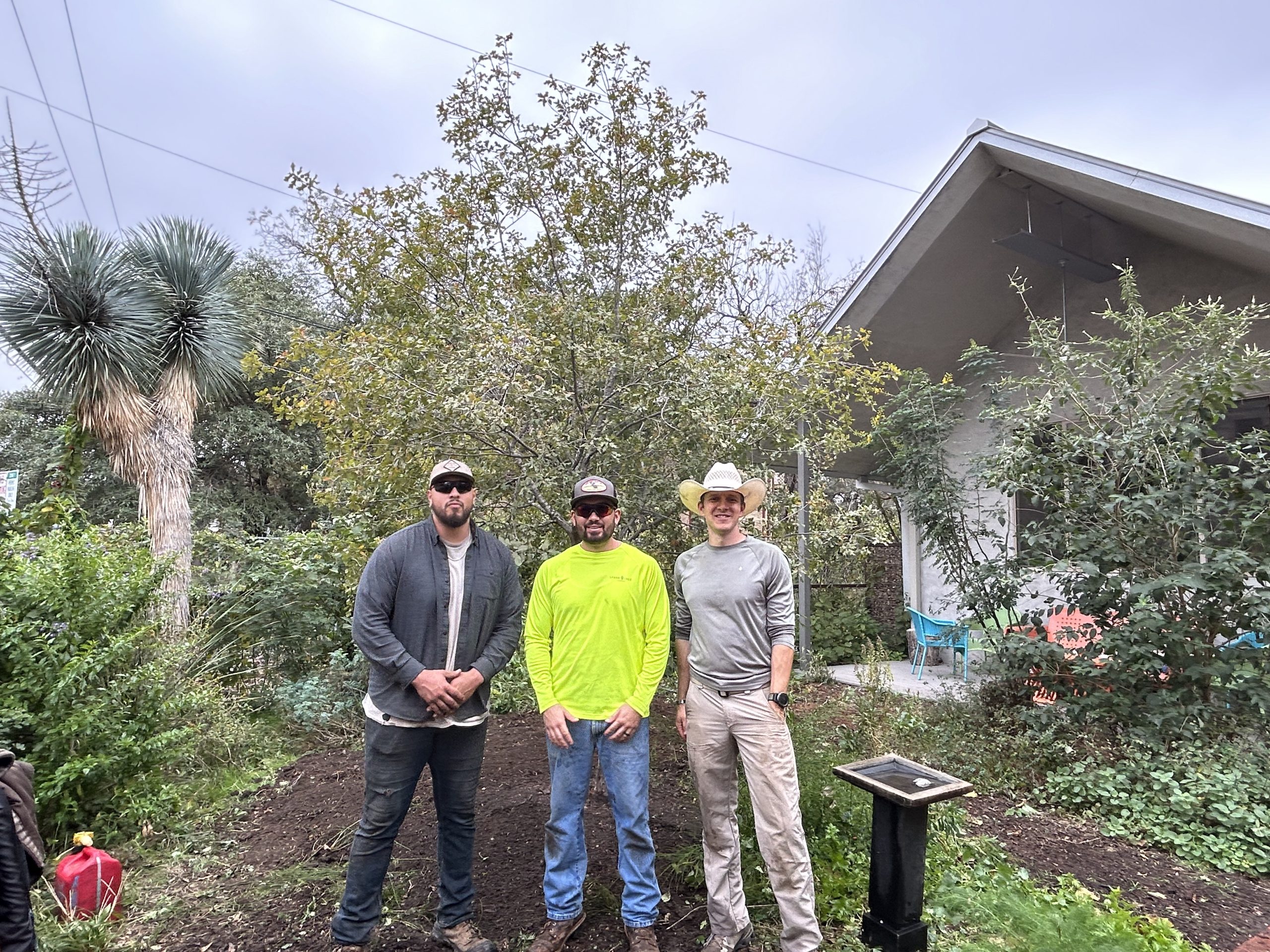
Thanks, fellas! Josh Castro, Anthony Aguirre, and Cody Segner. Not pictured, Tyler Light. Lacey oak in background. –Photo by Monika Maeckle
In most parts of the U.S., Arbor Day, the official time to plant trees is in the spring. But here in Texas and other hot parts of the planet, it happens the first Friday in November. For help on choosing and planting trees, check out the Texas A&M University Tree Planting Guide.
It’s not too late to plant a tree for Christmas. And it doesn’t have to be a 500-pound specimen. As the Chinese proverb advises, the best time to plant a tree was 20 years ago. The second best time is today.
TOP PHOTO: Lacey oak enjoying its forever home in downtown San Antonio, December 2023. –Photo by Monika Maeckle
Like what you’re reading? Don’t miss a single post from the Texas Butterfly Ranch. Sign up for email delivery, like us on Facebook, or follow us on Twitter, @monikam or Instagram.
Related posts:
- Ice storms, drought, extreme heat decimate Texas tree canopy
- Resilience required: climate change turns up heat in the butterfly garden
- Milkweed Shortage Sparks “Alternative Fuels” for Monarch Butterflies
- Texas Butterfly Ranch Milkweed Guide
- Will the Monarch Migration Become Extinct?
- How to Get Native Milkweed Seeds to Germinate
- Persnickety Texas milkweeds, May Not Lend Themselves to Mass Production
- Tropical Milkweed: To Plant it or Not is No Simple Question
- Desperately seeking Milkweed: Be sure to buy pesticide free plants
- Converting your Lawn to a Butterfly Garden

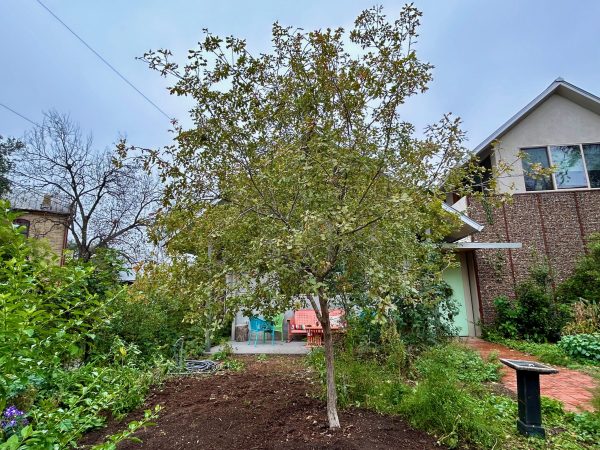
Thank you for an uplifting report devoid of climate hysteria!
Sorry for the loss of your mature tree, glad for the success of fitting a new tree in. Never heard of a Lacey oak. Sounds strong and resilient. May you all leaf happily together. 😊
❤️